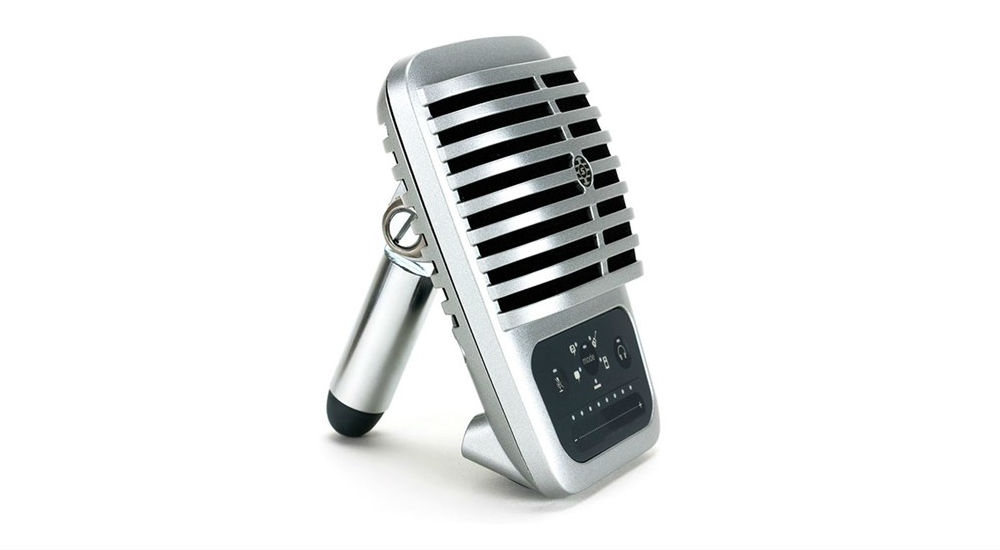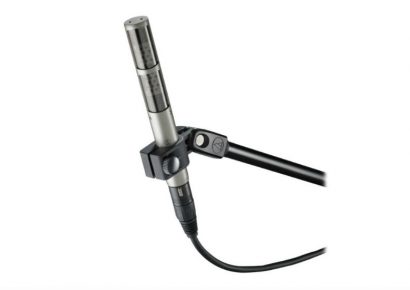It’s Plug and Play and that’s what we love – no messing about with drivers. Connect it via micro USB and its lights indicate it has come to life. The included USB cable is on the shorter side, but a longer replacement is only around the corner at your local electronics store.
The design harks back to the immortal design of the Shure Super 55 Deluxe, a beautiful vintage look that feels as sturdy as you’d expect from such a notoriously durable microphone producer. It’s 2020 however so where you might expect tact switches or rotary pots you’ve got a touch panel controlling the gain, a mute/unmute button, headphone volume button (the dial changes colour so you know it’s the headphone volume and not the mic gain) and the DSP mode selector.
It features a small kickstand so it can sit comfortably on your desk, otherwise you can remove the rubber foot of the stand to reveal a standard mic stand thread. In use, we preferred the recordings where the mic was on a stand closer to the performer’s mouth so a stand could be an ideal additional purchase.
Like most vocal microphones, the MV51 shines at close range. The manual advises a distance of five to 30 cm for speech and we found it worked best at the closer end of that scale, though this was in a home studio not on a professional sound stage. It’s worth noting that there’s no internal pop filter so you’ll want to get one if you’re wanting to avoid harsh-sounding plosives from close range use.
The large diaphragm is best suited to vocal applications but the five DSP settings offer alternate uses; Speech, Singing, Acoustic Music, Loud Music/Band and Flat. It’s a cardioid pattern and this doesn’t change with the five settings which are controlling the EQ, compression and limiting. These options are ideal for those new to the world of audio recording and are looking for a quick, easy solution to capture alternate sound sources.
Alternatively, there’s the flat setting if you’re looking to dial in your own EQ and compression down the chain. The microphone gain accompanies these settings well, with the lowest being suited to the Loud Music/Band setting and the highest ideal for Speech.
The downfall of early USB mics was cheap A-D converters and poorly designed capsules. Shure has been making microphones a long time and to see what they’ve achieved with the MV51 at such a modest price point is impressive. To save the need for an audio interface will surely suit the demands of an ever-growing entry-level market.

